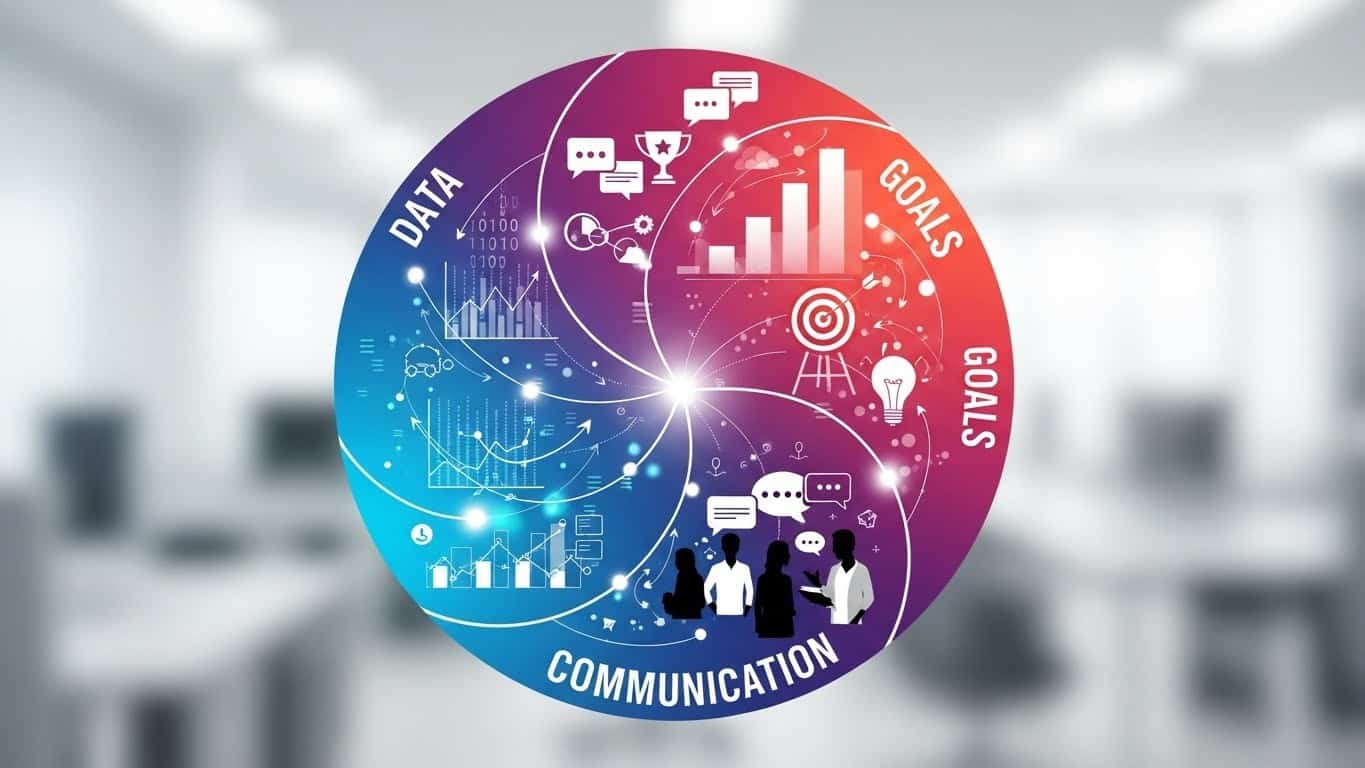Ensuring Business Continuity: Preparing for Unexpected Events
Disruption doesn’t send a calendar invite. It doesn’t wait until your systems are up to date or your team is fully staffed. One minute, business is humming along. The next, a ransomware attack encrypts your servers. Or a flood cuts off access to your warehouse. Or your key supplier suddenly shuts down.
For small and mid-size businesses, these disruptions can be more than just setbacks. Without a strong continuity plan in place, they can quickly escalate into existential threats.
Business Continuity Planning (BCP) helps organizations mitigate risk and recover faster. While enterprise companies often have dedicated teams focused on continuity, SMBs tend to take a “we’ll deal with it if it happens” approach—until they get hit.
That’s a costly mindset.
A smart move today—building a thoughtful, tested continuity plan—can be the difference between a brief hiccup and long-term damage.
What Is Business Continuity Planning, Really?
At its core, Business Continuity Planning is about making sure your organization can continue to function—at least at a minimum acceptable level—during and after a disruption. This includes everything from a server crash to a pandemic.
Importantly, continuity planning goes well beyond IT. It’s an operational strategy that covers:
-
People
-
Processes
-
Facilities
-
Suppliers and partners
-
Communications
Rather than trying to eliminate every possible risk—which is impossible—the goal is to identify critical operations and ensure there’s a reliable plan to keep them running or bring them back online quickly.
Common Disruptions That Require a Continuity Plan
Even companies in relatively low-risk industries face disruptions. Let’s look at a few of the most common threats:
1. Cybersecurity Incidents
Phishing attacks, ransomware, and data breaches are increasingly common—and increasingly costly. According to a 2023 IBM report, the average data breach costs businesses $4.45 million. While that figure skews higher for large organizations, SMBs often suffer deeper proportional losses due to tighter margins and fewer IT resources.
2. Natural Disasters
Hurricanes, wildfires, floods, and earthquakes can disrupt access to physical locations or damage vital infrastructure. In many cases, these events displace staff and delay customer service for weeks.
3. Power or Internet Outages
Temporary outages are often overlooked in continuity planning. Yet for businesses that rely on cloud-based systems or digital tools, even a few hours of downtime can stall revenue and frustrate customers.
4. Supply Chain Disruptions
COVID-19 exposed vulnerabilities in global supply chains. However, even localized disruptions—such as a key supplier going out of business—can have far-reaching effects on production and delivery timelines.
5. Loss of Key Personnel
When a founder, executive, or technical expert abruptly departs, many small businesses find themselves without a plan. Continuity planning accounts for this scenario by building in redundancy and succession pathways.
Six Core Elements of a Strong Business Continuity Plan
Creating a continuity plan can seem like a big lift, but breaking it into manageable components simplifies the process.
1. Conduct a Risk Assessment
Start by identifying the potential threats that could interrupt your operations.
Questions to ask include:
-
What internal vulnerabilities currently exist?
-
Which external risks—natural, economic, geopolitical—pose the greatest concern?
-
How likely is each risk, and what would the consequences be?
Once these risks are identified, use a risk matrix to prioritize which ones require proactive planning.
2. Complete a Business Impact Analysis (BIA)
The BIA maps out how disruptions affect each area of your business.
Key steps include:
-
Identifying essential operations and the dependencies attached to them
-
Estimating the financial and operational impact of downtime
-
Establishing your Recovery Time Objectives (RTO) and Recovery Point Objectives (RPO)
By completing a BIA, you’ll clarify what’s mission-critical and where the greatest vulnerabilities lie.
3. Develop Recovery Strategies
Next, define how you’ll respond to disruptions across core functions.
For example:
-
Set up off-site or cloud-based data backups
-
Establish vendor alternatives or secondary suppliers
-
Enable remote work with pre-configured devices or secure VPNs
-
Create facility redundancy or cross-train staff to step into multiple roles
Don’t overcomplicate it. Choose strategies that match the scale and structure of your business.
4. Build a Crisis Communication Plan
In a crisis, clarity and speed matter. A communication plan outlines who needs to be informed, how you’ll reach them, and what they’ll need to know.
Make sure to:
-
Identify spokespersons and assign responsibility by role
-
Prepare pre-approved message templates
-
Use multiple channels (email, SMS, internal platforms) for delivery
The goal is to keep your team, clients, and stakeholders calm, informed, and aligned.
5. Train Your Team and Test the Plan
Even the best plan falls apart if your people don’t know what to do. That’s why training is non-negotiable.
-
Run annual drills or simulations
-
Include scenario-based role-playing
-
Debrief afterward to evaluate gaps and update protocols
Over time, regular testing builds muscle memory across the organization.
6. Review and Update Continuously
Businesses aren’t static, and neither are their risks. As you grow or evolve, new dependencies emerge.
Therefore, assign a continuity lead to review and refresh the plan on a regular schedule—ideally every 6–12 months. This ensures your strategy stays aligned with real-world conditions.
The Strategic Upside of Continuity Planning
Business continuity planning isn’t just about defense. It also provides strategic benefits that support long-term scaling.
Here’s how it gives your company an edge:
-
Faster decision-making during crises
-
Improved cross-functional collaboration
-
Increased customer trust and retention
-
Stronger systems thinking across leadership
Additionally, the planning process often reveals operational inefficiencies that would otherwise remain hidden. In that sense, it’s as much about growth as it is about risk mitigation.
Patrick Lencioni puts it well: “If everything is important, then nothing is.” Continuity planning forces clarity and prioritization.
Common Mistakes to Avoid
To keep your plan actionable, watch for these pitfalls:
Over-relying on software tools
While continuity software helps, it’s no substitute for strategic thinking and strong leadership.
Writing overly complex documents
A 70-page plan might feel thorough, but no one will read it under pressure. Keep it concise and practical.
Failing to assign ownership
Every plan needs a clear leader and defined roles. Without them, execution falls apart fast.
Neglecting regular training
One-and-done planning is a recipe for chaos. Your team needs reps and refreshers.
Ignoring your people
Tech matters, but communication and culture are what carry teams through disruption.
Getting Started: Five Smart Moves
If you’re building a BCP for the first time, don’t try to do everything at once. Here’s where to begin:
-
Name a continuity lead.
-
Identify your top 3–5 business-critical functions.
-
List likely disruptions to those functions.
-
Evaluate the impact of each disruption.
-
Draft a basic response playbook for each scenario.
This gives you a foundation to build on—and quick wins to share with your team.
Tools to Support Your Planning
Use these to jump-start your process:
If you’re using Align to manage strategic priorities, consider mapping continuity actions as specific initiatives with assigned owners and due dates. That way, execution stays visible and accountable.
Final Thoughts: Resilience Is a Choice
The best time to prepare is before the storm hits. Continuity planning doesn’t eliminate risk, but it does ensure you’re ready to act—not react.
It’s the kind of smart move that leads to big wins later.
Jim Collins reminds us: “Greatness is not a function of circumstance. Greatness, it turns out, is largely a matter of conscious choice.”
Choose resilience. Build a team that knows how to respond, recover, and rise stronger than before.





